Diyandi Festival celebrates harmony among Iligan City’s cultural communities
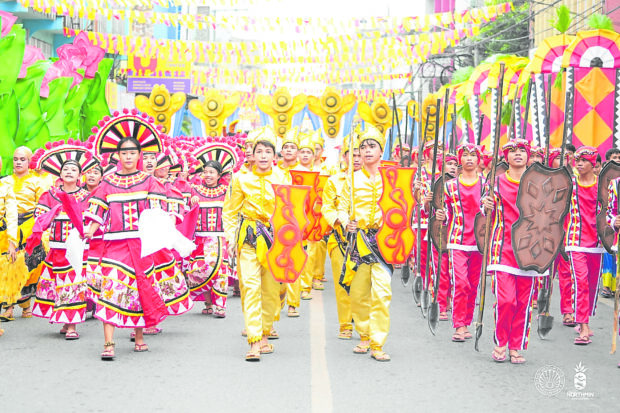
DANCE SHOWDOWN | Contingents prepare for a street dance showdown during the “Kasadya” (merrymaking), one of the highlights of the recent Diyandi Festival. (Photo by JASPER CUIZON / Contributor)
ILIGAN CITY, Lanao del Norte, Philippines — Anna Liza Lluch takes pride in being a devotee for the last 32 years of St. Michael the Archangel, this city’s patron whose feast is observed every Sept. 29.
During the traditional procession, Lluch would usually portray the saint who is regarded as commander of heaven’s forces, leading God’s army in the conquest of evil.
Instilled by her family from a young age, the devotion helped her overcome adversities, including being healed after a serious accident at a mall staircase that left her unable to walk for five months.
Another devotee, Pura Saladumpa, 62, recalled joining the procession since her elementary school days. She attributes to St. Michael her ability to see through various significant changes in her life, especially bringing healing to her kidney ailment.
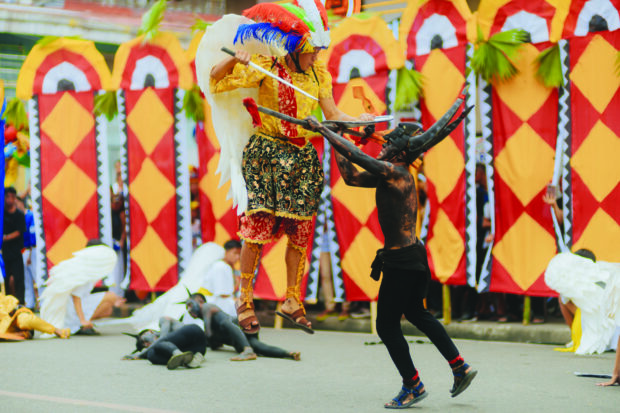
Actors reenact the classic battle that saw St. Michael the Archangel triumph over Lucifer. (Photo by JASPER CUIZON / Contributor)
Miracles occur if one sincerely requests the intervention of St. Michael, Saladumpa said, citing her own experience. This year, Saladumpa not only prayed for her personal intentions but also for peace in the city.
Article continues after this advertisementSt. Michael became Iligan’s patron in 1834 when it became a separate parish from what used to be Cagayan de Misamis (present-day Cagayan de Oro City). From being a Spanish colonial-era settlement in 1832, Iligan progressed into a melting pot of Christians, Muslims, and indigenous Higaonon peoples.
Article continues after this advertisementIn the Catholic faith, St. Michael is associated with spiritual courage, protection, and continuing struggle to subdue the forces of darkness.
Among the faithful in Iligan, his feast is celebrated in gratitude for his coming to the aid of the Christian, Muslim, and Higaonon so they are able to peacefully settle their differences and live harmoniously as a community.
His feast is also a thanksgiving by the faithful for the triumph over the devil who swooped down on the community to destroy the people’s unity and their source of living, as well as to aid them to rise again.
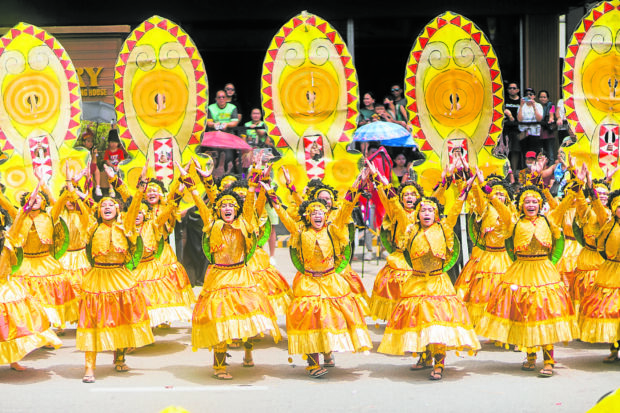
VENERATION | Children perform dances that depict the faithful’s veneration of St. Michael. (Photo by RICHEL V. UMEL / Inquirer Mindanao)
READ: Kauswagan marks 75th year by celebrating cultural diversity, marine bounty
READ: A festival of Quezon culture, unity
READ: Historic dishes in spotlight at Bulacan arts, culture fest
Challenge
This narrative hews closely to the travail of the Catholic prelature. In the early 1970s, then led by Bishop Bienvenido Tudtud, it pioneered interfaith dialogue in the Lanao provinces, reaching out to Muslims in the hope of finding a path for peace and mutual coexistence amid the brewing social conflicts in Mindanao.
Tudtud would later head the Prelature of St. Mary in Marawi City which the Vatican created not for proselytization but “to provide a reconciling presence with the Muslims.” When the prelature became a diocese in 1982, first led by Bishop Fernando Capalla, interreligious solidarity and dialogue became part of its mission.
The procession in 2012, several months after the city was devastated by Typhoon “Sendong” (international name: Washi) in December 2011, was full of tales and depictions of how St. Michael saved the people from the storm’s impact.
One Maranao offered testimony that they saw the Catholic patron saint break the Hinaplanon bridge where logs and debris piled up like a dam and caused flood water levels to rise throughout the city. After the bridge broke, the “dammed” water was released and floods receded, saving thousands of lives.
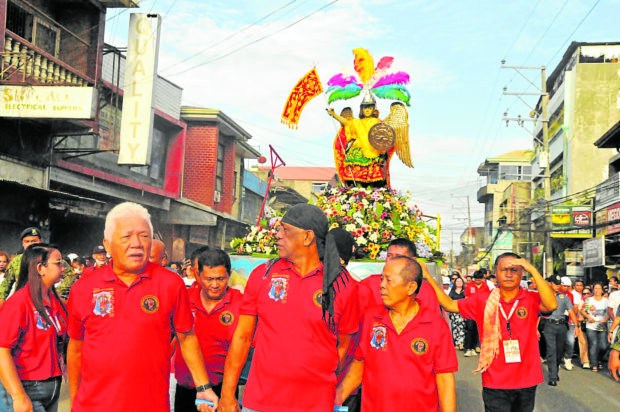
PATRON’S PROCESSION | Members of the “panaad,” a group whose members vowed to protect the image of St. Michael, lead the procession around Iligan City so people will catch a glimpse of their patron. (Photo by RICHEL V. UMEL / Inquirer Mindanao)
Tradition
Nine days before his feast, the statue of St. Michael is taken from its pedestal, clothed in a fresh garb, taken on a procession around the major streets of the city, and then placed on a platform within the cathedral that is closer to the people. The ritual, known as “Pakanaug,” symbolizes the saint’s coming down to offer protection to the community.
A novena then ensues, each day dedicated to specific petitions for divine intervention on issues hounding the community and its people.
On his feast day, St. Michael’s image is again taken on a procession around the city, drawing hundreds of thousands of devotees, including people from outside the city.
Several days after the feast, the image is returned to its pedestal after a procession, a ritual known as “Pasaka” or ascent, symbolizing St. Michael’s passing on the responsibility of care for the community to its leaders.
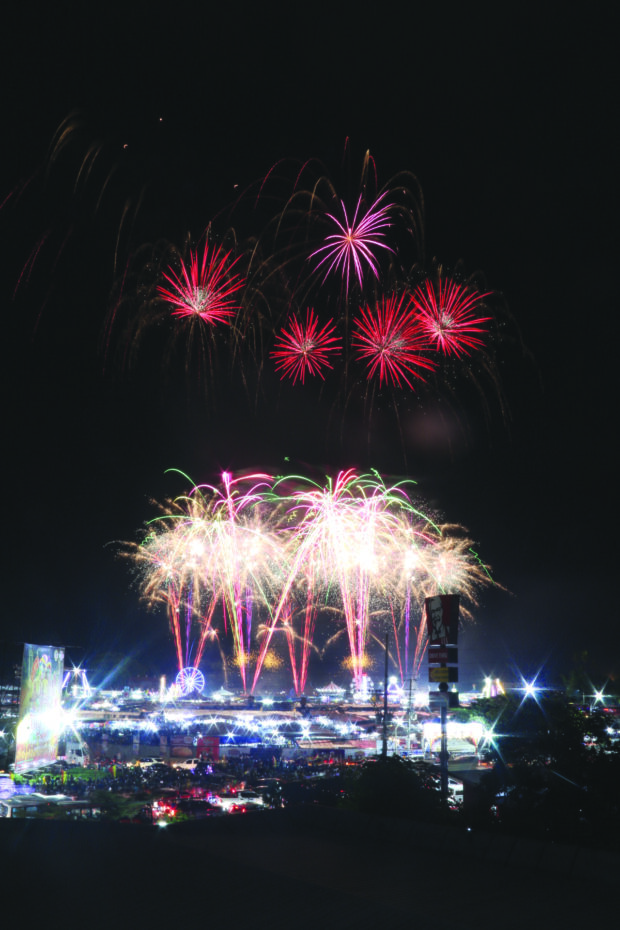
WITH A BANG | The Iligan City local government concluded the monthlong festival with a pyromusical show. (Photo by ILIMAR POLAOS / Contributor)
Since 2004, the local government launched the Diyandi Festival as its parallel way of celebrating the city’s gains and achievements, as well as to showcase the Christian, Muslim, and Higaonon cultures. Diyandi is a Higaonon word for celebration. And every Sept. 27, two days before the feast, the “Kasadya” (merrymaking) unfolds, making the city’s streets come alive in festive dancing and reenactment of St. Michael’s epic battle against Satan, with orations also done in Maranao and Higaonon languages.
The organized presentations of official contingents play out side by side with the spontaneous expressions of merrymaking and veneration by devotees, capped by the chant “Viva, Senior San Miguel!”
A city ordinance was passed in 2017 declaring a local holiday every Sept. 27 so that local children will have an opportunity to be immersed in the historical and cultural underpinnings of the festival.
Contemporary issues
In his homily during the Holy Mass in time for the feast, Bishop Jose Rapadas III said the people were faced with modern-day challenges that require strong faith and courage to deal with.
These include “the destruction of our common home” that spawns the displacement of people and communities; the weakening of the moral fiber of families; the addiction to technology, especially by the youth; and economic deprivation “that lessens the dignity of people.”
The attack against the integrity of families, he said, is heightened by the recent moves of national legislators to institute divorce as a social policy. “Let us pray for the strengthening of families,” Rapadas said.
Tech addiction, according to Rapadas, is changing the character and personality of the youth “as they have less interpersonal interaction, (suffer) lack of social skills and shallowness in relationships that lead to depression.”
“Let us pray for the youth to have more balanced and fulfilling lives,” he implored. “Let us also pray for government leaders that they help assuage the economic hardships of families.”